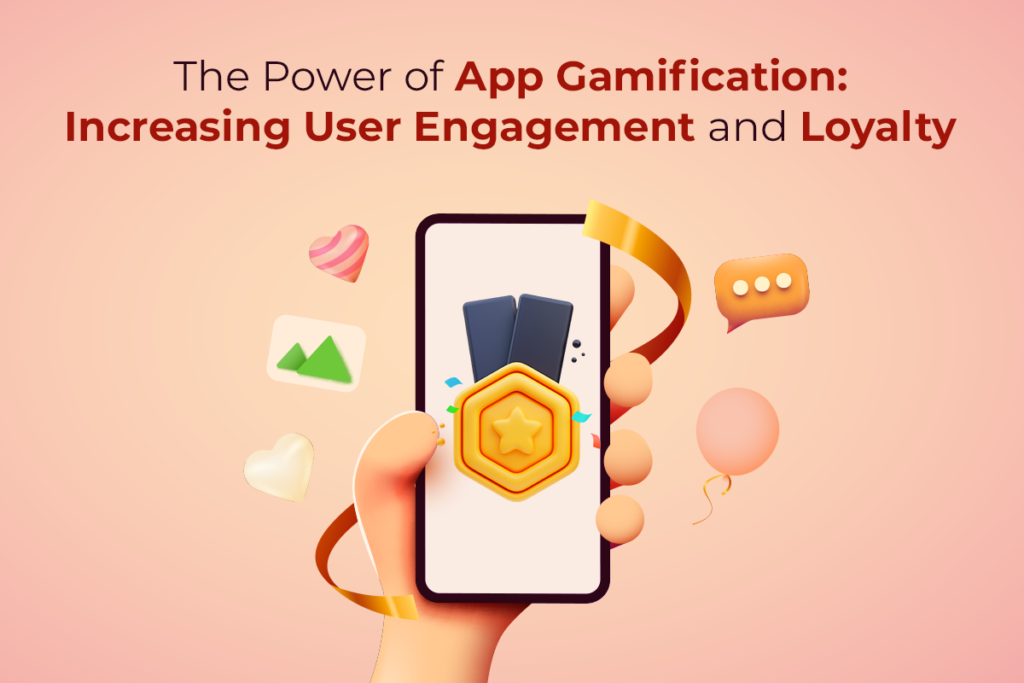
The Power of App Gamification: Increasing User Engagement and Loyalty
Introduction
In today’s highly competitive app market, retaining users and keeping them engaged is crucial for success. One effective strategy that has gained significant traction is app gamification. This article will explore the power of gamification in mobile apps and how it can lead to increased user engagement and loyalty.
Understanding App Gamification
What is App Gamification?
App gamification involves incorporating game elements and mechanics into non-gaming apps to enhance user interaction and motivation. These elements can include points, badges, leaderboards, challenges, and rewards, all designed to make the app experience more enjoyable and rewarding for users.
Benefits of Gamification for User Engagement
Fostering a sense of competition, achievement, and progress, gamification taps into users’ intrinsic motivations. By making tasks fun and challenging, users are more likely to stay active within the app, leading to increased time spent and improved retention rates.
Gamification Techniques for User Engagement
1. Points and Badges
Reward users with points and badges for completing tasks, reaching milestones, or demonstrating specific behaviors. This creates a sense of accomplishment and encourages users to explore more features of the app.
2. Leaderboards and Challenges
Implement leaderboards to showcase top users and create a healthy competitive environment. Introduce challenges that users can participate in to win rewards, fostering engagement and a sense of community.
3. Progress Tracking
Show users their progress within the app, whether it’s completing levels, earning points, or mastering skills. Transparent progress tracking keeps users motivated and invested in their app journey.
Personalization through Gamification
1. Tailored Challenges
Create personalized challenges based on users’ preferences and behaviors. By offering relevant and engaging tasks, users are more likely to participate and feel a deeper connection to the app.
2. Custom Avatars and Profiles
Allow users to customize their avatars and profiles within the app. Personalization fosters a sense of ownership and uniqueness, making users more attached to their in-app persona.
3. Adaptive Difficulty Levels
Adjust the difficulty of challenges and tasks based on users’ skill levels and progress. This ensures that users are continually challenged without feeling overwhelmed or disinterested.
The Impact on User Loyalty and Retention
1. Increased User Retention
Gamification encourages users to return to the app regularly to participate in new challenges and earn rewards. As a result, user retention rates improve, reducing churn and increasing long-term user engagement.
2. Emotional Connection to the App
By tapping into users’ emotions through the excitement of rewards and achievements, gamification creates a positive and lasting impression of the app. Users are more likely to establish an emotional connection, leading to enhanced loyalty.
3. Positive User Experience (UX)
An app with well-implemented gamification feels more interactive and entertaining. Users enjoy the process of completing tasks and achieving goals, resulting in a satisfying and memorable user experience.
Gamification Best Practices
1. Keep it Relevant
Ensure that the gamified elements align with your app’s core purpose and target audience. Irrelevant gamification can feel forced and may not resonate with users.
2. Balance and Progression
Maintain a balance between achievable and challenging tasks. Gradually increase difficulty to keep users engaged and motivated to progress further.
3. Regular Updates and Fresh Content
Continuously add new challenges, rewards, and features to keep the gamification experience exciting and prevent user fatigue.
Measuring Gamification Success and ROI
1. Tracking User Engagement
Monitor user interactions with gamified elements, such as completing challenges, earning rewards, and participating in leaderboards. Analyzing user engagement data helps identify the most effective gamification strategies.
2. Analyzing Retention Rates
Compare retention rates before and after implementing gamification to assess its impact on user loyalty. Higher retention rates indicate that gamification is positively influencing user behavior.
3. Conversion and Monetization
Evaluate whether gamification contributes to increased conversions, such as in-app purchases or subscription sign-ups. A successful gamification strategy can lead to improved monetization and a positive return on investment (ROI).
Challenges and Considerations
While gamification offers significant benefits, it’s essential to consider potential challenges. Over Gamification can overwhelm users or feel manipulative. Strive for a balanced approach that complements the app’s purpose without overshadowing its core features. Additionally, ensure that rewards are genuinely valuable to users to maintain their interest.
Conclusion
Incorporating gamification into your mobile app can be a game-changer for increasing user engagement and loyalty. By leveraging game elements, personalized challenges, and rewards, you can create a compelling and enjoyable app experience that keeps users coming back for more. As you implement gamification, remember to measure its effectiveness and make adjustments as needed to optimize its impact. When done right, gamification can be a powerful tool to transform your app into an engaging and successful platform.
Please feel free to Contact Us in case you need any guidance regarding your app marketing needs.





0